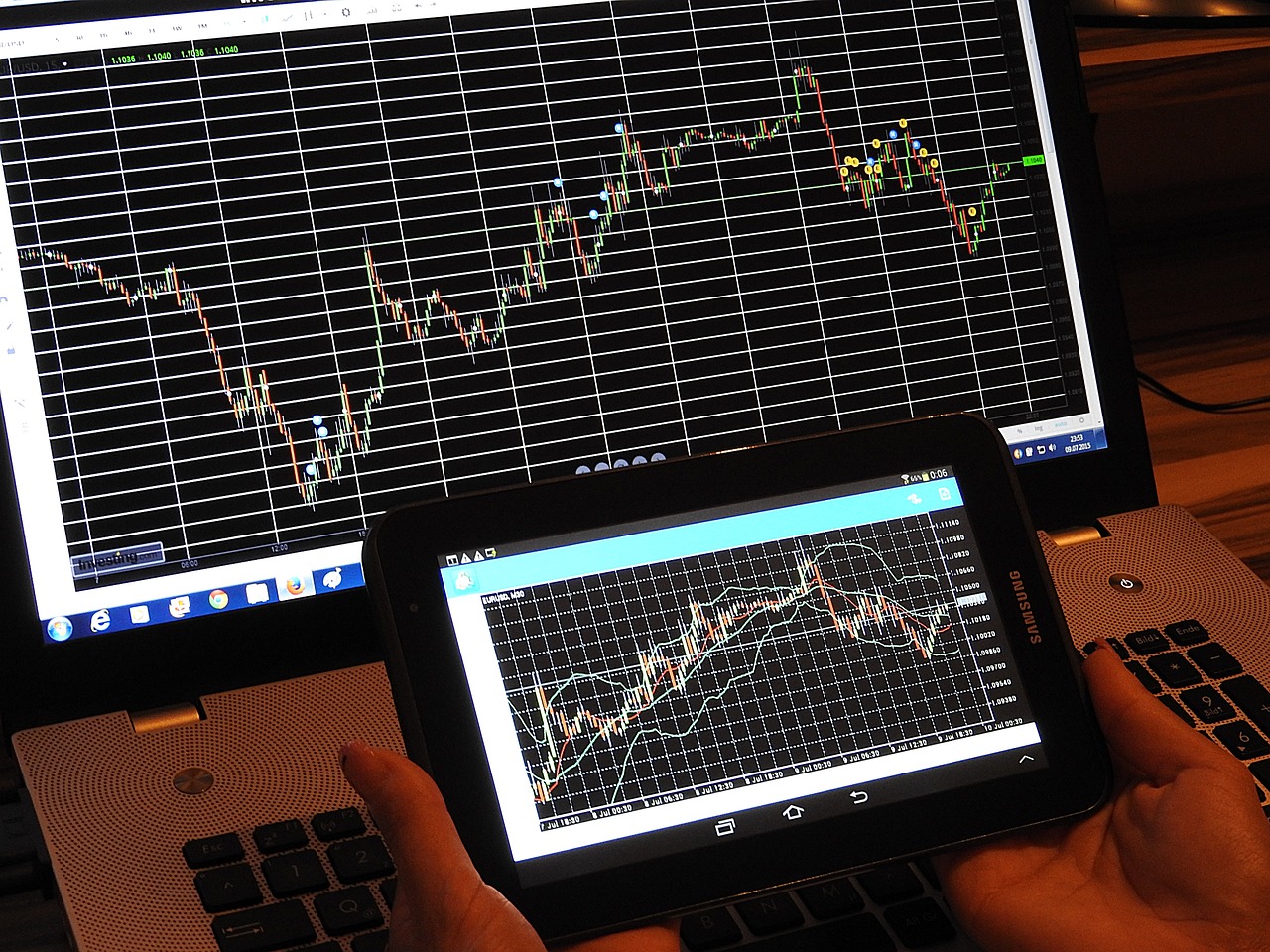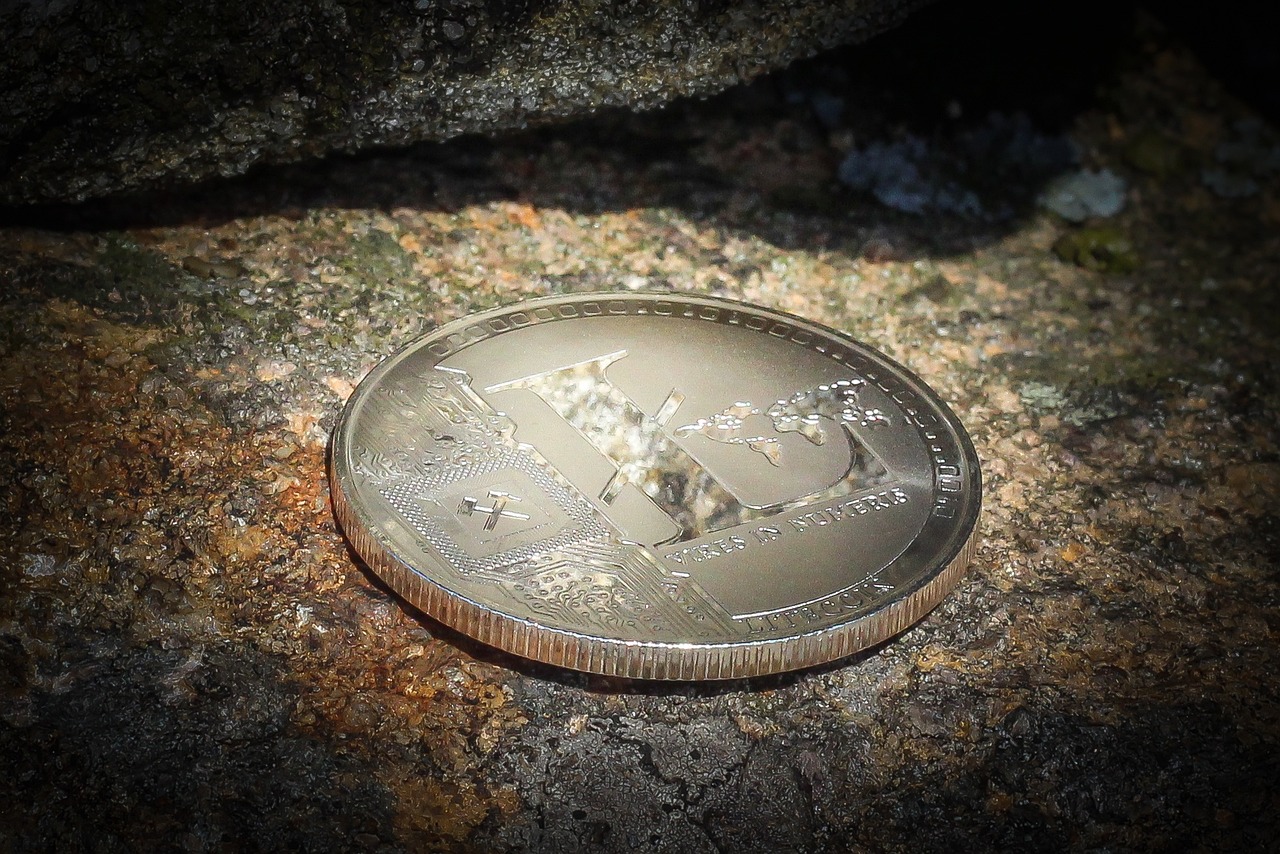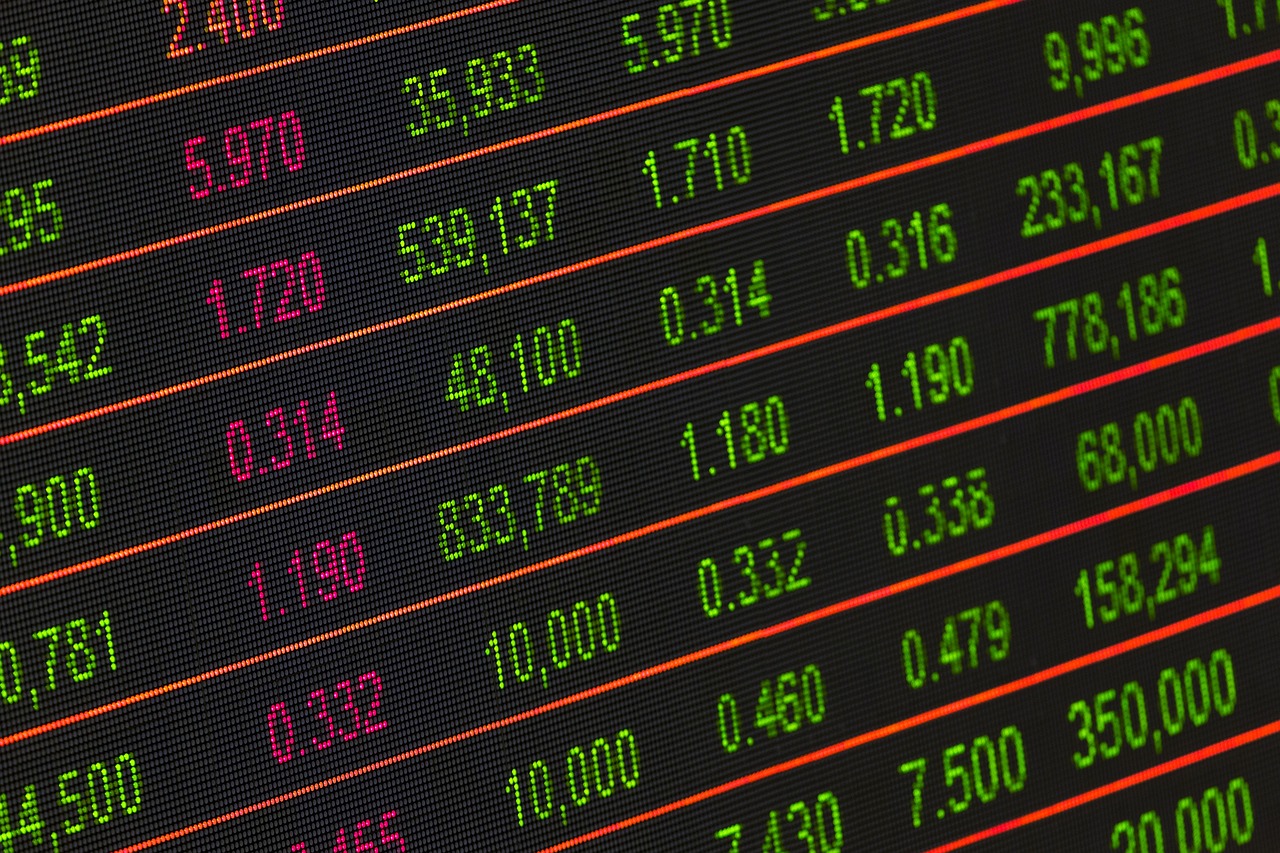How to Identify Key Reversal Patterns in Crypto Markets
Welcome to the thrilling world of cryptocurrency trading! If you're looking to navigate the choppy waters of the crypto markets, understanding key reversal patterns is essential. These patterns are like road signs, guiding traders toward potential shifts in market direction. Just imagine driving down a winding road and suddenly spotting a sign that warns you of a sharp turn ahead. That's exactly what reversal patterns do—they alert you when the market might be about to change course, giving you the chance to adjust your trading strategy accordingly.
Reversal patterns are significant because they indicate a change in the prevailing trend. For instance, a bullish reversal pattern might suggest that a downtrend is losing steam and that it’s time to consider buying, while a bearish reversal pattern could signal that an uptrend is about to reverse, prompting traders to sell. Recognizing these patterns can be the difference between riding the wave of profits or getting swept away by losses. So, how can you spot these crucial indicators? Let’s dive into the common reversal patterns that every crypto trader should know!
Reversal patterns serve as vital signals in the ever-fluctuating crypto market. They represent a shift in momentum, often driven by changes in market sentiment, news events, or macroeconomic factors. When traders identify these patterns, they can make informed decisions about when to enter or exit positions. Think of it like reading the weather forecast before planning a picnic; knowing whether it's going to rain or shine can help you avoid a soggy sandwich scenario!
In the world of crypto, timing is everything. If you can catch a reversal pattern early, you position yourself to capitalize on potential price movements. But remember, just like in life, nothing is guaranteed. It’s crucial to combine your analysis of reversal patterns with other indicators and market research to create a robust trading strategy. Now, let’s explore some of the most common reversal patterns that you’ll encounter in the crypto markets.
When it comes to spotting reversal patterns, there are a few key players that dominate the scene. Understanding these patterns can empower you to make more strategic trading decisions. Here are the most frequently observed reversal patterns:
- Head and Shoulders
- Inverse Head and Shoulders
- Double Tops
- Double Bottoms
Each of these patterns has its own unique characteristics and implications for traders. Let's break them down further, starting with the iconic head and shoulders pattern.
The head and shoulders pattern is often regarded as one of the most reliable indicators of trend reversal. It typically forms after an uptrend and signals a potential shift to a downtrend. Picture a mountain range where the middle peak (the head) is higher than the two surrounding peaks (the shoulders). This formation suggests that buyers are losing strength, and sellers are starting to take control. Recognizing this pattern can be your ticket to making a timely exit before a downward slide.
On the flip side, the inverse head and shoulders pattern is a bullish signal that appears after a downtrend. It resembles an upside-down version of the head and shoulders pattern, indicating that buyers are beginning to outnumber sellers. If you spot this pattern, it might be a great opportunity to enter the market and ride the wave of a potential price increase. Just like spotting a rainbow after a storm, this pattern can signify brighter days ahead for your investments.
Double tops and bottoms are crucial indicators of market reversals. A double top forms after an uptrend and signals a potential reversal to the downside, while a double bottom appears after a downtrend and indicates a possible reversal to the upside. These patterns are characterized by two peaks or troughs at approximately the same price level, suggesting that the market is struggling to break through those levels. Recognizing these formations can help you anticipate market shifts and position yourself accordingly.
In addition to the common patterns mentioned, several other reversal indicators exist that traders should be aware of. These include the Rounding Bottom, Triple Tops and Bottoms, and Wedges. Each of these patterns can provide valuable insights into market sentiment and potential price movements. The more patterns you familiarize yourself with, the better equipped you'll be to navigate the complex crypto landscape.
Volume analysis plays a critical role in confirming reversal patterns. It's not just about spotting a pattern on the chart; you also need to consider the volume trends accompanying those patterns. A reversal pattern with high trading volume is generally more reliable than one with low volume. Think of it like a concert; if the crowd is roaring, it’s a good sign that the band is hitting all the right notes!
Volume spikes can indicate strong buying or selling pressure. When you see a sudden increase in volume, it often suggests that a significant number of traders are entering the market, which can validate the strength of a reversal pattern. Recognizing these spikes and incorporating them into your trading decisions can enhance your accuracy and help you make more informed choices.
Understanding volume trends over time can provide insights into market sentiment. If you notice that volume is consistently increasing during a price rally, it suggests strong buyer interest. Conversely, if volume decreases during a price surge, it could indicate a lack of conviction among buyers, hinting that a reversal might be on the horizon. Monitoring these trends can be a game-changer in anticipating potential reversals effectively.
1. What are reversal patterns in crypto trading?
Reversal patterns are formations on price charts that indicate a potential change in the direction of the market trend.
2. How can I identify a head and shoulders pattern?
A head and shoulders pattern consists of three peaks: a higher peak (head) between two lower peaks (shoulders). Look for this formation after an uptrend.
3. Why is volume important in confirming reversal patterns?
Volume indicates the strength of a price move. High volume during a reversal pattern suggests strong interest and increases the reliability of that pattern.
4. Can reversal patterns guarantee profits?
While reversal patterns can signal potential market changes, they are not foolproof. Always combine them with other indicators and market analysis for better decision-making.

Understanding Reversal Patterns
In the fast-paced world of cryptocurrency trading, reversal patterns serve as crucial indicators of potential market shifts. These patterns signal a change in the prevailing trend, allowing traders to make informed decisions about when to enter or exit positions. Imagine you're a sailor navigating turbulent waters; recognizing the signs of a storm can be the difference between a smooth voyage and capsizing. In a similar vein, understanding reversal patterns can help traders avoid losses and seize profitable opportunities.
Reversal patterns come in various forms, each with its own unique characteristics and implications for market behavior. The significance of these patterns lies in their ability to forecast potential turning points in the market. When a trend is losing momentum, these patterns can alert traders to the possibility of a reversal, prompting them to adjust their strategies accordingly. For example, a bullish reversal pattern may encourage traders to buy, while a bearish reversal pattern could signal the need to sell or short the asset.
Recognizing these patterns is not just about spotting shapes on a chart; it involves a deeper understanding of market psychology. Traders must consider the sentiment behind the price movements. Are traders feeling optimistic or pessimistic? Are there external factors influencing the market? By combining technical analysis with an understanding of market sentiment, traders can better anticipate potential reversals.
To illustrate the importance of reversal patterns, consider the following key aspects:
- Market Sentiment: Reversal patterns often emerge during periods of heightened emotional trading, where fear or greed can drive prices to extremes.
- Volume Confirmation: The strength of a reversal pattern is often validated by volume trends, indicating whether the shift in direction is supported by significant trading activity.
- Timeframe Consideration: Patterns can appear on various timeframes, from minutes to weeks. Understanding the timeframe relevant to your trading strategy is essential for effective decision-making.
In summary, understanding reversal patterns is akin to having a compass in the unpredictable seas of cryptocurrency trading. By recognizing these patterns and interpreting the market sentiment behind them, traders can navigate their way to more informed investment decisions. As we delve deeper into the common reversal patterns in the crypto markets, keep in mind that these indicators are not foolproof; they require careful analysis and consideration of various factors to maximize their effectiveness.

Common Reversal Patterns
When it comes to navigating the volatile waters of the crypto markets, understanding can be your lifeboat. These patterns are like signals from the market, hinting at potential changes in direction that can either make or break your trading strategy. Imagine you're driving down a winding road; the signs that indicate upcoming turns are crucial for a safe journey. Similarly, recognizing these patterns can help you steer clear of losses and seize profitable opportunities.
One of the most recognized patterns is the head and shoulders formation. This pattern typically appears at the end of an uptrend and signals a potential reversal to the downside. It consists of three peaks: the first (left shoulder), the second (head), and the third (right shoulder), with the head being the highest point. The significance of this pattern lies in its ability to indicate a shift in market sentiment. Traders often look for confirmation through a break below the neckline, which is drawn by connecting the lows of the left and right shoulders. Once this neckline is breached, it’s like a green light for traders to consider shorting their positions, anticipating a downward movement.
On the flip side, we have the inverse head and shoulders pattern, which serves as a bullish signal. Picture this as a mirror image of the head and shoulders pattern. It forms during a downtrend and consists of three troughs: the left shoulder, the head, and the right shoulder, with the head being the lowest point. The breakout above the neckline signals a potential reversal to the upside. Traders seeking to capitalize on this pattern often look for entry points once the price breaks above the neckline, indicating that the bears are losing control.
Next up are the double tops and bottoms. These patterns are crucial indicators of market reversals. A double top occurs after an uptrend and is characterized by two peaks at roughly the same price level, followed by a decline. It’s like a boxer who throws two powerful punches but fails to land the knockout; the price struggles to break through a resistance level. Conversely, a double bottom forms after a downtrend and consists of two troughs at similar price levels, signaling a potential bullish reversal. In both cases, traders often look for confirmation through price action breaking the respective support or resistance levels.
To further enhance your understanding, here’s a quick visual table summarizing these patterns:
| Pattern | Formation | Signal |
|---|---|---|
| Head and Shoulders | Three peaks (left shoulder, head, right shoulder) | Bearish reversal |
| Inverse Head and Shoulders | Three troughs (left shoulder, head, right shoulder) | Bullish reversal |
| Double Top | Two peaks at similar levels | Bearish reversal |
| Double Bottom | Two troughs at similar levels | Bullish reversal |
These patterns are not just abstract concepts; they are essential tools that can significantly enhance your trading strategy. By mastering these common reversal patterns, you can better position yourself to make informed decisions, whether you're looking to enter or exit a trade. Remember, the key to successful trading is not just about recognizing these patterns but also understanding the market sentiment behind them. So, keep your eyes peeled and your trading strategies sharp!

Head and Shoulders
The pattern is one of the most reliable indicators of trend reversal in the cryptocurrency markets. Imagine you're climbing a mountain, and suddenly you reach a plateau. That plateau is where the market has peaked, and the head and shoulders pattern is the sign that it's time to prepare for the descent. This pattern typically consists of three peaks: a higher peak (the head) flanked by two lower peaks (the shoulders). Understanding this formation is crucial for traders looking to capitalize on potential shifts in market direction.
To identify a head and shoulders pattern, traders look for the following characteristics:
- Left Shoulder: The price rises to a peak and then declines.
- Head: The price rises again, surpassing the previous peak, before declining once more.
- Right Shoulder: The price rises a final time but fails to reach the height of the head, followed by a decline.
Once this pattern is confirmed, it signals a potential bearish reversal, meaning that prices are likely to drop. Traders often look for a break below the neckline, which is formed by connecting the lows of the declines following the shoulders. This break is considered a strong signal to enter a short position. In essence, the head and shoulders pattern acts like a warning bell, alerting you that the bullish trend may be coming to an end.
Additionally, the significance of this pattern cannot be overstated. It not only helps in identifying potential reversals but also provides a target for price movement. The height of the head from the neckline can be projected downwards from the breakout point to estimate the potential decline. This makes it an invaluable tool for risk management and setting profit targets.
In the world of crypto trading, where emotions often run high, recognizing the head and shoulders pattern can be a game-changer. It empowers traders to make informed decisions rather than relying on gut feelings. So, the next time you spot this pattern forming on your charts, remember that it could be your opportunity to ride the wave of market change!

Inverse Head and Shoulders
The pattern is a powerful bullish reversal signal that traders often look for in the crypto markets. Imagine a mountain range where the first peak (the left shoulder) is followed by a deeper valley (the head), and then another smaller peak (the right shoulder) emerges, creating a distinct shape that resembles an upside-down head and shoulders. This pattern typically forms after a downtrend, indicating that the market is ready to shift gears and head upwards.
To identify this pattern, traders should look for three key components: the left shoulder, the head, and the right shoulder. The left shoulder forms when the price declines to a low point, followed by a rebound that leads to the formation of the head—a deeper low. After reaching this low, the price again rises, but this time it only retraces to a level similar to the first shoulder before declining again to create the right shoulder. The crucial part of this setup is the neckline, which is drawn by connecting the peaks of the left shoulder and the head. A breakout above this neckline confirms the pattern, signaling a potential bullish trend.
Here’s a quick breakdown of how to spot the inverse head and shoulders:
- Left Shoulder: Price drops, then rises to form the first peak.
- Head: Price drops further, creating a lower trough before rising again.
- Right Shoulder: Price rises again but not as high as the head, then drops once more.
- Neckline: The line connecting the peaks of the left shoulder and head.
Once traders see the price breaking above the neckline, it’s often considered a strong entry point for buying. The potential profit can be estimated by measuring the distance from the head to the neckline and projecting that distance upward from the breakout point. This method helps traders set realistic profit targets and stop-loss levels.
Moreover, the strength of the inverse head and shoulders pattern increases when accompanied by a rise in trading volume as the price breaks above the neckline. This volume confirmation suggests that the bullish momentum is strong and that traders are actively participating in the upward movement. It’s essential to keep an eye on volume trends while analyzing this pattern to avoid false signals.
In summary, the inverse head and shoulders pattern is not just a visual cue for traders; it’s a compelling narrative of market psychology. It tells the story of buyers gaining strength after a period of selling pressure, leading to a potential reversal in the market trend. By mastering this pattern, traders can enhance their strategies and capitalize on the opportunities that arise in the dynamic world of cryptocurrency trading.

Double Tops and Bottoms
Double tops and bottoms are among the most critical reversal indicators in the cryptocurrency markets. They serve as powerful signals that can help traders identify potential trend reversals. A double top typically appears after an uptrend and indicates that the price has reached a resistance level twice before falling, while a double bottom occurs after a downtrend, showing that the price has hit a support level twice before bouncing back up. Understanding these patterns can be a game-changer for traders looking to optimize their investment strategies.
To spot a double top, look for two peaks at approximately the same price level, separated by a trough. This pattern suggests that buyers are losing momentum, and sellers are starting to take control. Conversely, a double bottom is characterized by two troughs at similar price levels, indicating that sellers are losing strength and buyers are stepping in. Recognizing these formations early can provide traders with a significant edge in the volatile crypto market.
Here's a quick breakdown of how to identify and interpret these patterns:
| Pattern | Formation | Implication |
|---|---|---|
| Double Top | Two peaks at similar price levels | Potential trend reversal from bullish to bearish |
| Double Bottom | Two troughs at similar price levels | Potential trend reversal from bearish to bullish |
Now, you might be wondering, “How can I use these patterns in my trading strategy?” The key is to wait for confirmation before acting. For a double top, traders often look for the price to break below the trough that forms between the two peaks. This break signifies a stronger selling signal. In the case of a double bottom, a breakout above the peak between the two troughs confirms that buyers are gaining control, and it's time to consider entering a long position.
Moreover, volume plays a crucial role in validating these patterns. A double top accompanied by high trading volume during the formation of the peaks can strengthen the bearish signal, while a double bottom with increased volume during the upward breakout suggests robust buying interest. Therefore, always keep an eye on volume when analyzing these patterns.
In summary, double tops and bottoms are essential tools in a trader's arsenal. By recognizing these patterns and understanding their implications, you can make more informed trading decisions that align with market movements. Remember, the crypto market is full of surprises, and being able to identify these reversal patterns can help you stay ahead of the curve.
- What is a double top pattern? A double top is a bearish reversal pattern that occurs after an uptrend, characterized by two peaks at roughly the same price level.
- What is a double bottom pattern? A double bottom is a bullish reversal pattern that occurs after a downtrend, marked by two troughs at similar price levels.
- How can I confirm a double top or bottom? Confirmation can be achieved by waiting for the price to break below the trough in a double top or above the peak in a double bottom.
- Why is volume important in these patterns? Volume helps validate the strength of the reversal; high volume during the formation of the pattern indicates stronger market sentiment.

Other Notable Patterns
While the head and shoulders, double tops, and double bottoms are the heavyweights in the world of reversal patterns, there are other notable patterns that traders should keep an eye on. These patterns, though less common, can provide valuable insights and opportunities in the ever-evolving crypto markets. Understanding these lesser-known indicators can enhance your trading strategy and potentially lead to profitable outcomes.
One such pattern is the Rounding Bottom. This pattern signifies a gradual shift from a bearish to a bullish trend. It resembles a "u" shape and indicates that the selling pressure is waning, making way for buyers to take control. Traders often look for this pattern to confirm a long-term reversal, as it typically suggests a strong bullish momentum following the completion of the pattern.
Another important pattern to consider is the Triple Top and Triple Bottom. These patterns are similar to double tops and bottoms but involve three peaks or troughs instead of two. A triple top indicates a strong resistance level, while a triple bottom signals a robust support level. The formation of these patterns can indicate a significant trend reversal, and traders often use them to make informed decisions about entering or exiting positions.
Additionally, the Ascending and Descending Triangles are crucial formations that traders should not overlook. An ascending triangle typically signifies bullish sentiment, characterized by a flat resistance line and rising support. Conversely, a descending triangle indicates bearish sentiment, with a flat support line and declining resistance. Recognizing these patterns can help traders anticipate potential breakouts and reversals in the market.
Lastly, the Falling Wedge and Rising Wedge patterns are essential to be aware of. A falling wedge pattern forms when the price action makes lower highs and lower lows, indicating a potential bullish reversal. On the other hand, a rising wedge forms when the price makes higher highs and higher lows, signaling a potential bearish reversal. Identifying these patterns can provide traders with early signals of trend reversals, allowing them to adjust their strategies accordingly.
In summary, while the more common reversal patterns are crucial for traders, it's equally important to be aware of these other notable patterns. By expanding your knowledge and recognizing these indicators, you can enhance your trading strategy and navigate the crypto markets with greater confidence.
- What are reversal patterns? Reversal patterns indicate a change in market direction, signaling potential buying or selling opportunities.
- How can I identify a head and shoulders pattern? Look for three peaks: the first (left shoulder), the second (head), and the third (right shoulder) with the right shoulder being lower than the head.
- What is the significance of volume in reversal patterns? Volume confirms the strength of a reversal pattern; higher volume during the formation of a pattern indicates stronger conviction in the market move.
- Are there any other notable reversal patterns? Yes, patterns like the rounding bottom, triple tops/bottoms, ascending/descending triangles, and falling/rising wedges are also important to watch for.

Volume Analysis in Reversals
When it comes to trading cryptocurrencies, understanding volume analysis is crucial, especially when identifying potential reversal patterns. Volume, in simple terms, refers to the number of assets traded during a specific timeframe. It acts as a powerful confirmation tool that can either validate or invalidate the signals given by price movements. Think of volume as the heartbeat of the market; without it, the price action can feel lifeless and unreliable.
In the world of crypto trading, a surge in volume often precedes significant price movements. When you see a price reversal accompanied by a notable increase in volume, it’s like a loud alarm bell ringing—indicating that something important is happening. Conversely, if a reversal occurs with low volume, it might just be a fleeting moment, like a whisper in a crowded room. Therefore, recognizing volume trends alongside price changes can enhance your trading strategy dramatically.
To effectively analyze volume in the context of reversals, traders should focus on two main aspects: volume spikes and volume trends. Both elements provide critical insights into market sentiment and potential future movements. Let’s break these down further:
Volume spikes are sudden increases in trading volume that can indicate strong buying or selling pressure. Imagine you're at a concert; when the crowd goes wild, you know something exciting is happening. In trading, a volume spike often signals that traders are either rushing to buy or sell, which can lead to significant price shifts. Recognizing these spikes can help traders make informed decisions. For instance, if a cryptocurrency suddenly experiences a volume spike while approaching a resistance level, it might suggest a potential breakout. Conversely, if a spike occurs at a support level, it could indicate that sellers are stepping in.
While spikes provide immediate insights, understanding volume trends over time can offer a broader perspective on market sentiment. An upward trend in volume, particularly during price increases, usually indicates strong buyer interest. On the flip side, if prices are rising but volume is declining, it might suggest a lack of conviction among buyers, hinting that a reversal could be on the horizon. To visualize this, consider the following table:
| Price Movement | Volume Trend | Implication |
|---|---|---|
| Price Increases | Increasing Volume | Strong Buyer Interest |
| Price Increases | Decreasing Volume | Weakening Momentum |
| Price Decreases | Increasing Volume | Strong Seller Pressure |
| Price Decreases | Decreasing Volume | Possible Reversal |
By analyzing volume trends, traders can better anticipate potential reversals. For example, if you notice a consistent increase in volume while the price is trending downward, it could signal that buyers are starting to step in, potentially leading to a reversal. On the other hand, if the price is rising but the volume is tapering off, it might be a good idea to brace for a potential downturn.
In conclusion, incorporating volume analysis into your trading strategy is not just beneficial; it's essential. By paying attention to volume spikes and trends, you can make more informed decisions, ultimately enhancing your chances of success in the volatile world of cryptocurrency trading. Remember, the market is like a dance; when you can hear the rhythm of volume, you can move with it instead of against it.
Q: How can I track volume in cryptocurrency trading?
A: Most trading platforms provide volume data alongside price charts. You can also use specialized tools and websites that offer detailed volume analysis.
Q: Is high volume always a good sign?
A: Not necessarily. While high volume can indicate strong interest, it’s essential to consider the context. A price drop with high volume might suggest panic selling.
Q: Can volume analysis predict future price movements?
A: While volume analysis can provide insights into market sentiment and potential reversals, it is not foolproof. Always combine it with other indicators for a comprehensive strategy.

Volume Spikes
When diving into the world of cryptocurrency trading, one of the most crucial elements to monitor is . These spikes can serve as a powerful indicator of market sentiment, often signaling significant buying or selling pressure. Imagine you're at a concert: when the crowd roars, you know something exciting is happening. Similarly, a volume spike indicates that something is brewing in the market, and it’s essential to pay attention. But how do we recognize these spikes, and what do they mean for our trading strategies?
Volume spikes occur when the trading volume of a cryptocurrency suddenly increases significantly compared to its average volume over a specific period. This can happen for various reasons, such as news releases, major market events, or the influence of prominent traders. Understanding these spikes can provide traders with insight into potential price movements. For instance, if you notice a volume spike coinciding with a price increase, it might suggest strong buying interest, indicating that the price could continue to rise. On the flip side, a volume spike during a price drop could signal panic selling, hinting that the price may continue to fall.
To effectively incorporate volume spikes into your trading strategy, consider the following key points:
- Identify the Context: Always assess the broader market context. A volume spike in isolation might not tell the whole story. Look for accompanying news or events that could explain the sudden interest.
- Confirm with Price Action: A volume spike should ideally be accompanied by a corresponding price movement. If volume spikes but the price remains stagnant, it might be a false signal.
- Use Technical Indicators: Combine volume analysis with other technical indicators, such as moving averages or RSI, to confirm trends and potential reversals.
Moreover, it’s essential to track both the magnitude and duration of the volume spikes. A massive spike that lasts for just a brief moment may not carry the same weight as a smaller spike that persists over several hours or days. Traders often use volume charts to visualize these changes, making it easier to spot trends and shifts in market dynamics.
In conclusion, volume spikes are not just random occurrences; they are vital signals that can enhance your trading strategy. By being vigilant and knowing how to interpret these spikes, you can make more informed decisions, potentially leading to better trading outcomes. Remember, in the fast-paced world of crypto, every second counts, and being attuned to volume fluctuations can give you the edge you need to navigate this volatile landscape.

Volume Trends
Understanding over time is essential for any trader looking to anticipate potential reversals in the crypto market. Just like a detective piecing together clues, analyzing volume trends can reveal the underlying sentiment of the market. When you observe volume increasing alongside price changes, it can signify that the movement is supported by strong interest, making it more reliable. Conversely, if prices rise but volume decreases, it could indicate a lack of conviction, suggesting that a reversal might be on the horizon.
To effectively analyze volume trends, consider the following aspects:
- Consistency: Look for consistent volume patterns over several trading sessions. A sudden spike in volume can be a sign of a trend change, but it should be backed by sustained interest.
- Comparative Analysis: Compare current volume levels to historical averages. If the current volume is significantly higher than the average, it may indicate a strong shift in market sentiment.
- Volume Relative to Price Action: Always consider how volume behaves relative to price movements. For instance, if a cryptocurrency is breaking out to new highs, but volume is low, it may not be a sustainable move.
Another critical aspect to consider is the context of the volume trend. For example, if a cryptocurrency has been in a downtrend and suddenly experiences a spike in volume while the price starts to stabilize, it could be a sign that buyers are stepping in, potentially indicating a reversal. On the other hand, if the volume spikes during a downtrend, it might suggest panic selling, which could lead to further declines.
In addition to analyzing raw volume data, traders often use tools like the On-Balance Volume (OBV) indicator or the Accumulation/Distribution Line to gauge the flow of money into and out of a cryptocurrency. These indicators can help clarify whether a price movement is supported by genuine interest or if it’s merely a fleeting spike.
Ultimately, recognizing volume trends is akin to tuning into the heartbeat of the market. By paying close attention to how volume shifts in relation to price, you can gain valuable insights into potential reversals, allowing you to make more informed trading decisions. Remember, in the world of cryptocurrency, the only constant is change, and being able to read the signals can set you apart from the crowd.
1. What is a volume trend in crypto trading?
Volume trends refer to the changes in the amount of a cryptocurrency traded over a specific period. Analyzing these trends can help traders gauge market sentiment and anticipate potential price reversals.
2. How do I know if a volume spike is significant?
A significant volume spike is typically characterized by a sharp increase compared to historical averages. It should coincide with a notable price movement to confirm its relevance.
3. Can volume trends predict market reversals?
Yes, volume trends can be a powerful predictor of market reversals. If volume increases as prices stabilize or reverse, it often indicates that traders are shifting their positions, which can lead to a trend change.
4. What tools can I use to analyze volume trends?
Traders often use technical indicators like On-Balance Volume (OBV) and the Accumulation/Distribution Line to analyze volume trends and understand market dynamics better.
5. Should I rely solely on volume trends for trading decisions?
While volume trends are crucial, they should not be the only factor in your trading strategy. Always consider other technical indicators and market conditions for a comprehensive approach.
Frequently Asked Questions
-
What are key reversal patterns in crypto trading?
Key reversal patterns are formations on price charts that indicate a potential change in the direction of the market. Recognizing these patterns can help traders make informed decisions about when to buy or sell cryptocurrencies, potentially maximizing their profits.
-
How can I identify a head and shoulders pattern?
The head and shoulders pattern consists of three peaks: a higher peak (the head) between two lower peaks (the shoulders). To identify it, look for a rise in price followed by a peak, a higher peak, and then a decline to a similar level as the first peak. This pattern often signals a trend reversal from bullish to bearish.
-
What does the inverse head and shoulders pattern indicate?
The inverse head and shoulders pattern is a bullish reversal pattern that signals a potential upward price movement. It features three troughs, with the middle trough being the lowest (the head) and the two outer troughs being higher (the shoulders). Identifying this pattern can present a great buying opportunity.
-
How do double tops and bottoms work?
Double tops occur when the price reaches a peak twice before declining, indicating a potential reversal from bullish to bearish. Conversely, double bottoms happen when the price hits a low twice before rising, signaling a reversal from bearish to bullish. These patterns are crucial for predicting market shifts.
-
Why is volume analysis important in identifying reversals?
Volume analysis helps confirm the strength of a reversal pattern. A significant increase in volume during a price change can indicate strong buying or selling pressure, making the reversal more reliable. Traders often look for volume spikes alongside price movements to validate their trading decisions.
-
What should I look for in volume trends?
When analyzing volume trends, observe the volume over time in relation to price movements. Increasing volume during a price rise suggests strong bullish sentiment, while increasing volume during a decline indicates bearish sentiment. Understanding these trends can help anticipate potential reversals effectively.



















